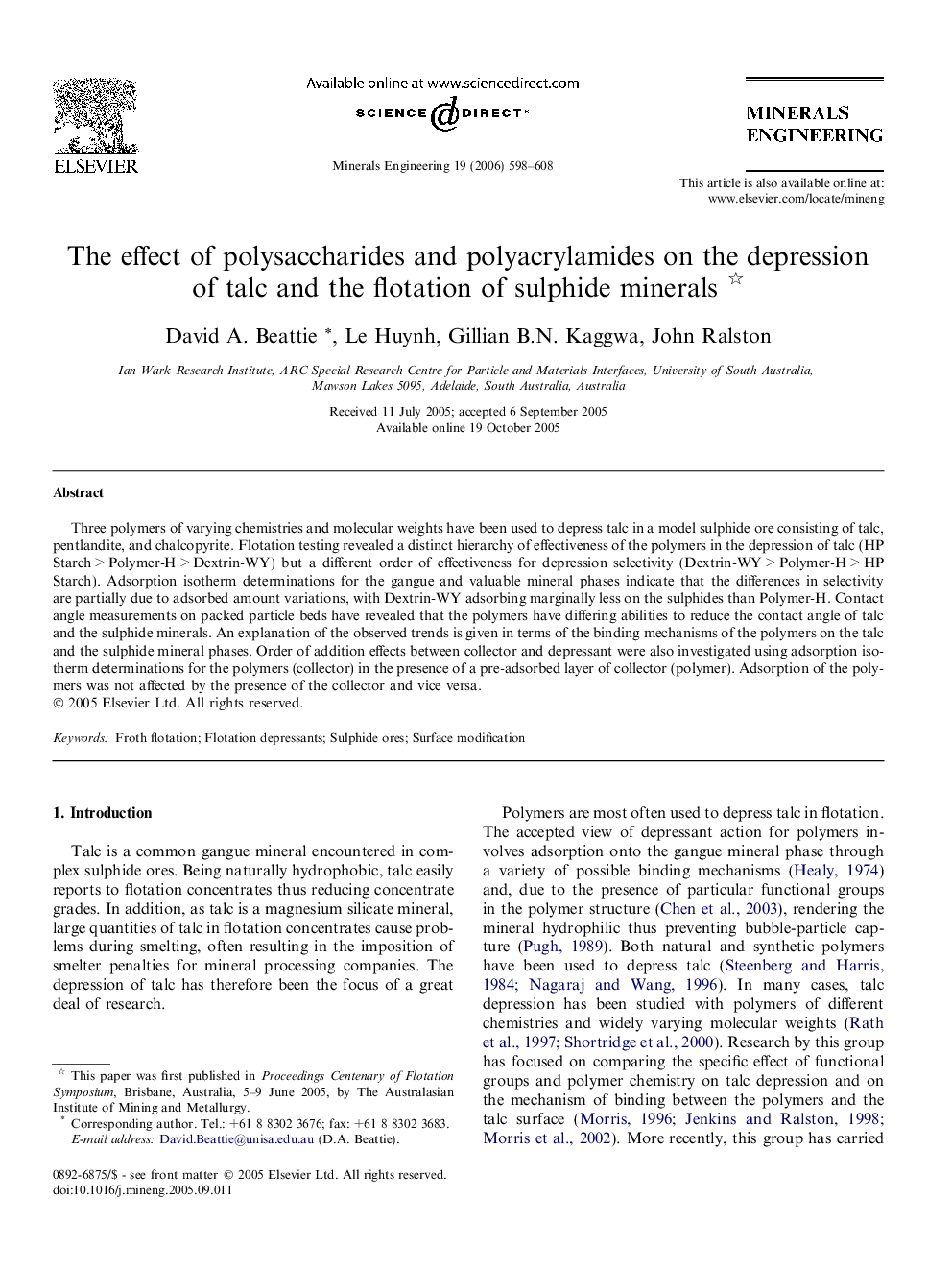| Article ID | Journal | Published Year | Pages | File Type |
|---|---|---|---|---|
| 234561 | Minerals Engineering | 2006 | 11 Pages |
Three polymers of varying chemistries and molecular weights have been used to depress talc in a model sulphide ore consisting of talc, pentlandite, and chalcopyrite. Flotation testing revealed a distinct hierarchy of effectiveness of the polymers in the depression of talc (HP Starch > Polymer-H > Dextrin-WY) but a different order of effectiveness for depression selectivity (Dextrin-WY > Polymer-H > HP Starch). Adsorption isotherm determinations for the gangue and valuable mineral phases indicate that the differences in selectivity are partially due to adsorbed amount variations, with Dextrin-WY adsorbing marginally less on the sulphides than Polymer-H. Contact angle measurements on packed particle beds have revealed that the polymers have differing abilities to reduce the contact angle of talc and the sulphide minerals. An explanation of the observed trends is given in terms of the binding mechanisms of the polymers on the talc and the sulphide mineral phases. Order of addition effects between collector and depressant were also investigated using adsorption isotherm determinations for the polymers (collector) in the presence of a pre-adsorbed layer of collector (polymer). Adsorption of the polymers was not affected by the presence of the collector and vice versa.
